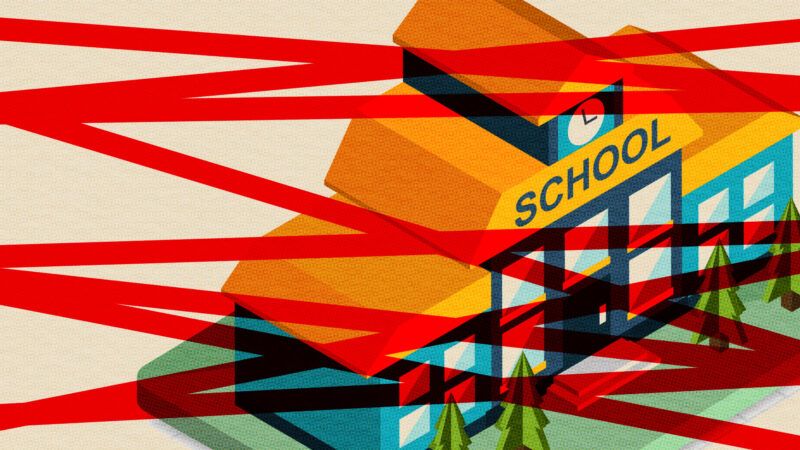Microschool Parents Zoned Out of Operation
In states like Utah, microschools are up against burdensome building regulations.

Alexander Cheung's nine-year-old son has autism and ADHD. He struggled socially and emotionally in public school both in California and after the family moved to Liberty, Utah. After researching the benefits neurodivergent kids get from being in nature, Cheung started the Wilderland Academy, an outdoor microschool for self-directed learners. But then he tried to build a small building on land a community member was letting them use.
"[The county] would send us a question, or say we need more information," Cheung tells Reason. "And then they would take four to eight weeks to get back to us with an answer."
The estimated cost to check every box and build the building? Anywhere from $500,000 to $1 million, just for a 1,000-square-foot building.
That's why Cheung and other education entrepreneurs are supporting Senate Bill 13 in Utah, which is currently moving through the legislature. It would treat microschools as Group B buildings, meaning they would have similar health and safety requirements as dance studios or other places where kids do extracurricular activities. It would also permit microschools in all zones. No longer would they legally need an extensive $100,000 fire suppression system, four bathrooms, and a commercial kitchen.
Many people know microschools as learning pods that grew in popularity during the COVID-19 pandemic. But microschools can be any education set-up that serves a small group of students. They can give a classical education, be more student-directed, or have flexible schedules to accommodate homeschoolers or neurodivergent learners.
Jon England, an education policy analyst at the Utah-based Libertas Institute, believes zoning commissions are trying to do what's right. But microschools are so new they can be difficult to categorize into existing categories.
"You show up to a city. And you say, 'Hey, I have this thing. It's not really a school.…It's not a tutoring center necessarily,'" England tells Reason. "It's not any of these things that fit into the boxes that government bureaucrats look at. And so a lot of times cities are just like, 'We don't know what this is, so, no, you can't come into our city.'"
It's unclear how many microschools exist in Utah because new ones keep popping up, but England estimates there are more than 100 everywhere from big cities to rural towns.
England says most education entrepreneurs are not millionaires, but former public school teachers like him: "That's probably like 60 to 70 percent of them. The other ones are parents."
"We put 10 kids into a church classroom with one adult that could teach the Bible on Sunday. But if you teach them math or science on Monday through Friday, they are now violating those buildings' occupancy standards," England says. "They are safe buildings. Most of them already have sprinklers….They have multiple exits. They have multiple bathrooms in the building already. But when you add that extra layer from the educational occupancy, you start to get a lot more requirements that don't make sense with the smaller school population."
If the legislation passes, cities could still regulate aspects like traffic or parking. The number of students in a microschool home would also be capped at 16, with up to 100 students allowed in a microschool based in a commercial building.*
While prospective microschool families and leaders wait for the regulatory relief of Senate Bill 13, Cheung told the Utah Senate Education Committee the difference his microschool has already made: "We have seen our son and many other children in our microschool transform from someone who resisted going to school to someone who can't wait to get there and often doesn't want to leave."
*CORRECTION: This article previously misstated the number of students allowed in microschool settings under Senate Bill 13.


Show Comments (14)